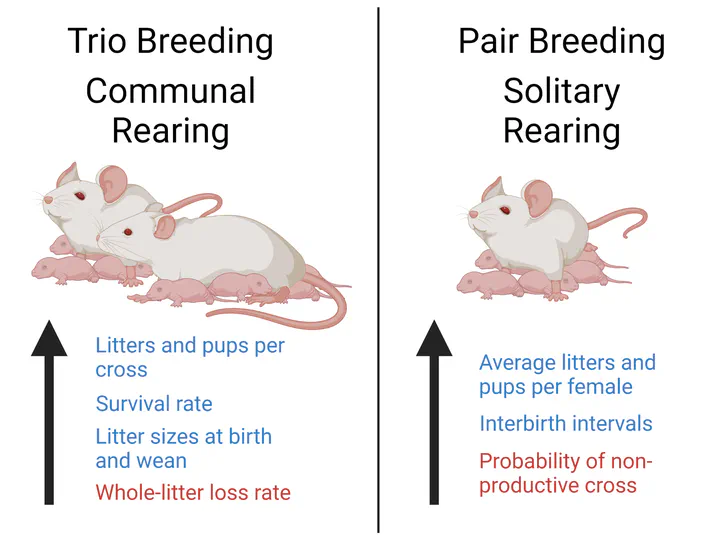Fitness effects of breeding strategy: implications for life history trait evolution and mouse husbandry
Feb 13, 2023·,·
0 min read
Alexis Garretson
Beth L. Dumont

Abstract
Reproductive tactics can profoundly influence population reproductive success, but paradoxically, breeding strategy and female reproductive care often vary across a population. The causes and fitness impacts of this variation are not well understood. Using breeding records from the Collaborative Cross mouse population, we evaluate the effects of breeding configuration on reproductive output. Overall, we find that communal breeding in trios leads to higher output and that both trio-breeding and overlapping litters are associated with increased neonatal survival. However, we find significant strain-level variation in optimal breeding strategy and show that the tradeoff between strategies is weakly heritable. We further find that strain reproductive condition influences the ability to support multiple litters and alters the related evolutionary tradeoffs of communal breeding. Together, these findings underscore the role of genetics in regulating alternative reproductive tactics in house mice and emphasize the need to adopt animal husbandry practices tailored to strain backgrounds.
Type
Publication
bioRxiv